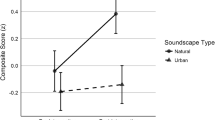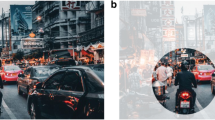Abstract
Results of nonlinear finite element analysis support the Schachar theory of accommodation and demonstrate that the long-held Helmholtz theory of accommodation is impossible.
Similar content being viewed by others
References
Young, T.. On the mechanism of the eye. Philos Trans Roy Soc Lond. 1801;92:23–88.
Tscherning M. Physiological Optics. Philadelphia, Pa: Keystone; 1904:160–189.
Fincham EF. Mechanism of accommodation. Br J Ophthalmol. 1937;8(suppl.):5–80.
Ivanoff A. On the influence of accommodation on spherical aberration in the human eye: an attempt to interpret night myopia. J Opt Soc Am. 1947;37:730–731.
Kooman M, Tousey R, Scolnik R. The spherical aberration of the eye. J Opt Soc Am. 1949;39:370–376.
von Helmholtz H. Uber die Akkommodation des Auges. Graefes Arch Clin Exp Ophthalmol. 1855;1:1–89.
Schachar RA. Cause and treatment of presbyopia with a method for increasing the amplitude of accommodation. Ann Ophthalmol. 1992;24:445–452.
Schachar RA. Zonular function: a new hypothesis with clinical implications. Ann Ophthalmol. 1994;26:36–38.
Schachar RA, Anderson DA. The mechanism of ciliary muscle function. Ann Ophthalmol. 1995;27:126–132.
Schachar RA. Histology of the ciliary muscle-zonular connections. Ann Ophthalmol. 1996;28:70–79.
Schachar RA. Is Helmholtz's theory of accommodation correct?. Ann Ophthalmol. 1999;31:10–17.
Schachar RA, Cudmore DP, Black TD. A revolutionary variable focus lens. Ann Ophthalmol. 1996;28:11–18.
Schachar RA, Cudmore DP, Black TD, et al. Paradoxical optical power increase of a deformable lens by equatorial stretching. Ann Ophthalmol. 1998;30:10–18.
Fisher RF. Elastic constants of the human lens capsule. J. Physiol [Lond]. 1969;201:1–19.
van Alphen GWHM, Graebel WP. Elasticity of tissues involved in accommodation. Vision Res. 1991;31:1417–1438.
Krag S, Olsen T, Andreassen TT. Biomechanical characteristics of the human anterior lens capsule in relation to age. Invest Ophthalmol Vis Sci. 1997;38:357–363.
Hogan MJ, Alvardo JA, Weddell JE. Histology of the Human Eye. Philadelphia, Pa: WB Saunders Co; 1971:667–673.
Duke-Elder S, Gloster J, Weale RA. The physiology of the eye and of vision. In: Duke-Elder S, ed. System of Ophthalmology. Vol. 4 London, England: Henry Kimpton; 1968:365–366.
Burd HJ, Judge SJ, Flavell MJ. Mechanics of accommodation of the human eye. Vision Res. 1999;39:1591–1595.
Baughman RH, Dantas SO, Stafrom S, Zakhidov AA. Mitchell, TB, Dubin DHE. Negative Poisson's ratios for extreme states of matter. Science. 2000;288:2018–2022.
Chen JS, Pan C. A pressure projection method for nearly incompressible rubber hyperelasticity. Part I: Theory. J Appl Mech. 1996;63:862–868.
Chen JS, Wu CT, Pan C. A pressure projection method for nearly incompressible rubber hyperelasticity. Part II: Applications. J Appl Mech. 1996;63:869–876.
Brown N. The change in shape and internal form of the lens of the eye on accommodation. Exp Eye Res. 1973;15:441–459.
Farnsworth PN, Shyne SE. Anterior zonular shifts with age. Exp Eye Res. 1979;28:291–297.
McCulloch C. The zonule of Zinn: its origin, course, and its relation to neighboring structures. Trans Am Ophthalmol Soc. 1954;52:525–585.
Brown N. The shape of the lens equator. Exp Eye Res. 1974; 19:571–576.
ANSYS 5.6 User's Manual & Theory Reference. Cannonsburg, Pa: ANSYS Inc; 1999.
Born W, Wolf E. Principles of Optics. 4th ed. Oxford, England: Pergamon Press; 1970:161–163.
Zemax Optical Design Program: User's Guide. Version 9.0 Tucson, Ariz: Focus Software Inc; 2000.
Donders FC. On the Anomalies of Accommodation and Refraction of the Eye. London, England: New Sydenham Society; 1864:204–214.
van Alphen GWHM, Robinett SL, Macri FJ. Drug effects on ciliary muscle and choroid preparations in vitro. Arch. Ophthalmol. 1962;68:111–123.
Fisher RF. The force of contraction of the human ciliary muscle during accommodation. J Physiol. 1977;270:51–74.
Fukasaku H. The Correction of Presbyopia [film]. Seattle, Wash: American Society of Cataract and Refractive Surgery; May 1999.
Schachar RA, Tello C, Cudmore DP, et al.. In vivo increase of the human lens equatorial diameter during accommodation. Am J Physiol. (Regulatory Integrative Comp Physiol 40). 1996;271:R670-R676.
Schachar RA, Cudmore DP, Torti R, et al. A physical model demonstrating Schachar's hypothesis of accommodation. Ann Ophthalmol. 1994;26:4–9.
Emery JM, Paton D. Current Concepts in Cataract Surgery. St Louis, Mo: CV Mosby Co; 1976:182–189.
Streeten, BW. Zonular apparatus. In: Jakobiec FA, ed. Ocular Anatomy, Embryology and Teratology. Philadelphia, Pa: Harper & Row Publishers; 1982:331–353.
Schachar RA, Huang T, Huang X. Mathematic proof of Schachar's hypothesis of accommodation. Ann Ophthalmol. 1993;25:5–9.
Ganem SP, Stubler S. The mechanism of human accommodation: an analytical mathematical model [abstract]. Presented at: American Society of Cataract and Refractive Surgery meeting; May 2000; Boston, Mass.
Neider MW, Crawford K, Kaufman PL, Bito LZ. In vivo videography of the rhesus monkey accommodative apparatus: age-related loss of ciliary muscle response to central stimulation. Arch Ophthalmol. 1990;108:69–74.
Koretz JF, Bertasso AM, Neider MW, True-Gabelt B, Kaufman PL. Slit-lamp studies of the Rhesus monkey eye. II. Changes in crystalline lens shape, thickness and position during accommodation and aging. Exp. Eye Res. 1987;45:317–326.
Wilson RS. Does the lens diameter increase or decrease during accommodation? Human accommodation studies: a new technique using infrared retro-illumination video photography and pixel unit measurements. Trans Am Ophthalmol Soc. 1997;95:261–270.
Le Grand Y. Optique Physiologique I. 2nd ed. Paris, France: Editions de la Revue D'Optoque; 1952:45.
Gullstrand A. In: von Helmholtz H, ed. Physiological Optics. 3rd ed. Mineola, NY: Dover Publications; 1962:56, 396.
Enoch JM, Hope GM. An analysis of retinal orientation. IV. Center of the entrance pupil and the center of convergence of orientation and directional sensitivity. Invest Ophthalmol. 1972;11:1017–1021.
Glasser A, Kaufman PL. The mechanism of accommodation in primates. Ophthalmology. 1999;106:863–872.
Levy NS. The mechanism of accommodation in primates [letter]. Ophthalmology. 2000;107:625.
Glasser A, Kaufman PL. The mechanism of accommodation in primates [letter]. Ophthalmology. 2000;107:626.
Strenk SA, Semmlow JL, Strenk LM, et al. Age-related changes in human ciliary muscle and lens: a magnetic resonance imaging study. Invest Ophthalmol Vis Sci. 1999;40:1162–1169.
Levy NS. Age-related changes in human ciliary muscle and lens: a magnetic resonance imaging study [letter]. Invest Ophthalmol Vis Sci [online]. 2000. Available at: http://www.iovs.org/cgi/eletters/40/6/1162#ELO3.
Strenk SA, Krishnan A, Semmlow, Strenk LS, DeMarco JK. Volume changes in the in vivo associated with accommodation [abstract]. Invest Ophthalmol Vis Sci. 2001:42:S9.
Tripathi RC, Tripathi BJ. Anatomy, orbit and adnexa of the human eye. In: Davson H, ed. The Eye. Vol 1A. 3rd ed. Orlando, Fla: Academic Press; 1984:56–57.
Rafferty NS. Structure, function and pathology. In: Maisel H, ed. The Ocular Lens. New York, NY: Marcel Dekker; 1985:2–5.
Sakabe I, Oshika T, Lim SJ, Apple DJ. Anterior shift of zonular insertion onto the anterior surface of human crystalline lens with age. Ophthalmology. 1998;105:295–299.
Lim SJ, Shin JK, Kim HB, Kurata Y, Sakabe I, Apple DJ. Analysis of zonular-free zone and lens size in relation to axial length of eye with age. J Cataract Refract Surg. 1998;24:390–396.
Coulombe JL, Coulombe AJ. Lens development. IV. Size, shape and orientation. Invest Ophthalmol. 1969;8:251–257.
Marshall J, Bauconsfield M, Rothery S. The anatomy and development of the human lens and zonules. Trans Ophthalmol Soc UK. 1982;102:423–440.
Kleinman NJ, Worgul BV. The lens. In: Tasman W, ed. Duane's Foundations of Clinical Opthalmology. Vol. 1. Philadelphia, Pa: JB Lippincott: 1994:chap 15.
Duke-Elder S, Waybar KC. Anatomy of the visual system. In: Duke-Elder S. ed. System of Ophthalmology. Vol 2. London, England: Henry Kimpton; 1962:312–313.
Schachar RA, Black TD, Huang T, Understanding Radial Keratotomy. Denison, Tex: LAL Publishing; 1981:100–102.
Author information
Authors and Affiliations
Corresponding author
Additional information
This article was published in the Summer 2001 issue of Annals of Ophthalmology.
About this article
Cite this article
Schachar, R.A., Bax, A.J. Mechanism of human accommodation as analyzed by nonlinear finite element analysis. Compr Ther 27, 122–132 (2001). https://doi.org/10.1007/s12019-996-0006-5
Issue Date:
DOI: https://doi.org/10.1007/s12019-996-0006-5




